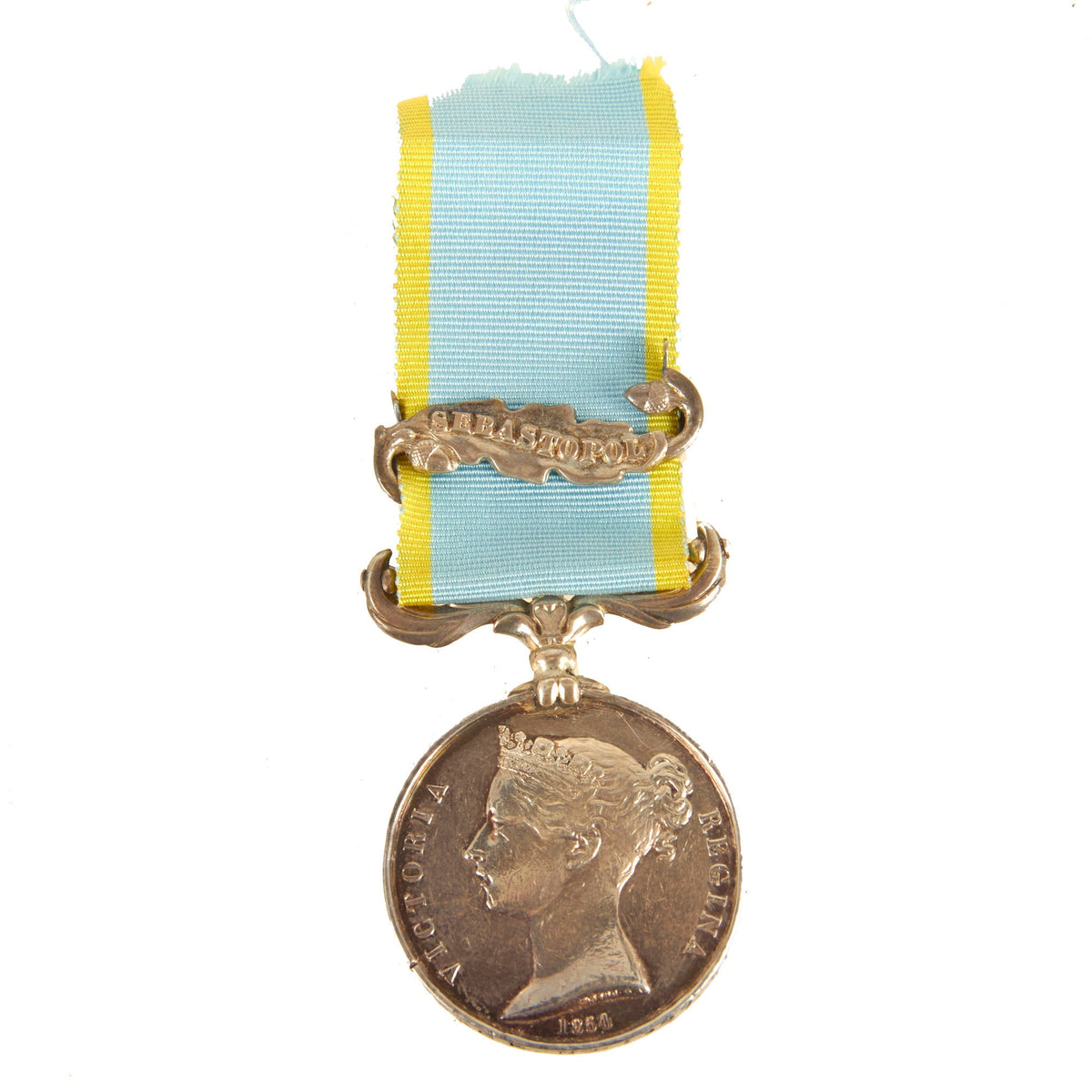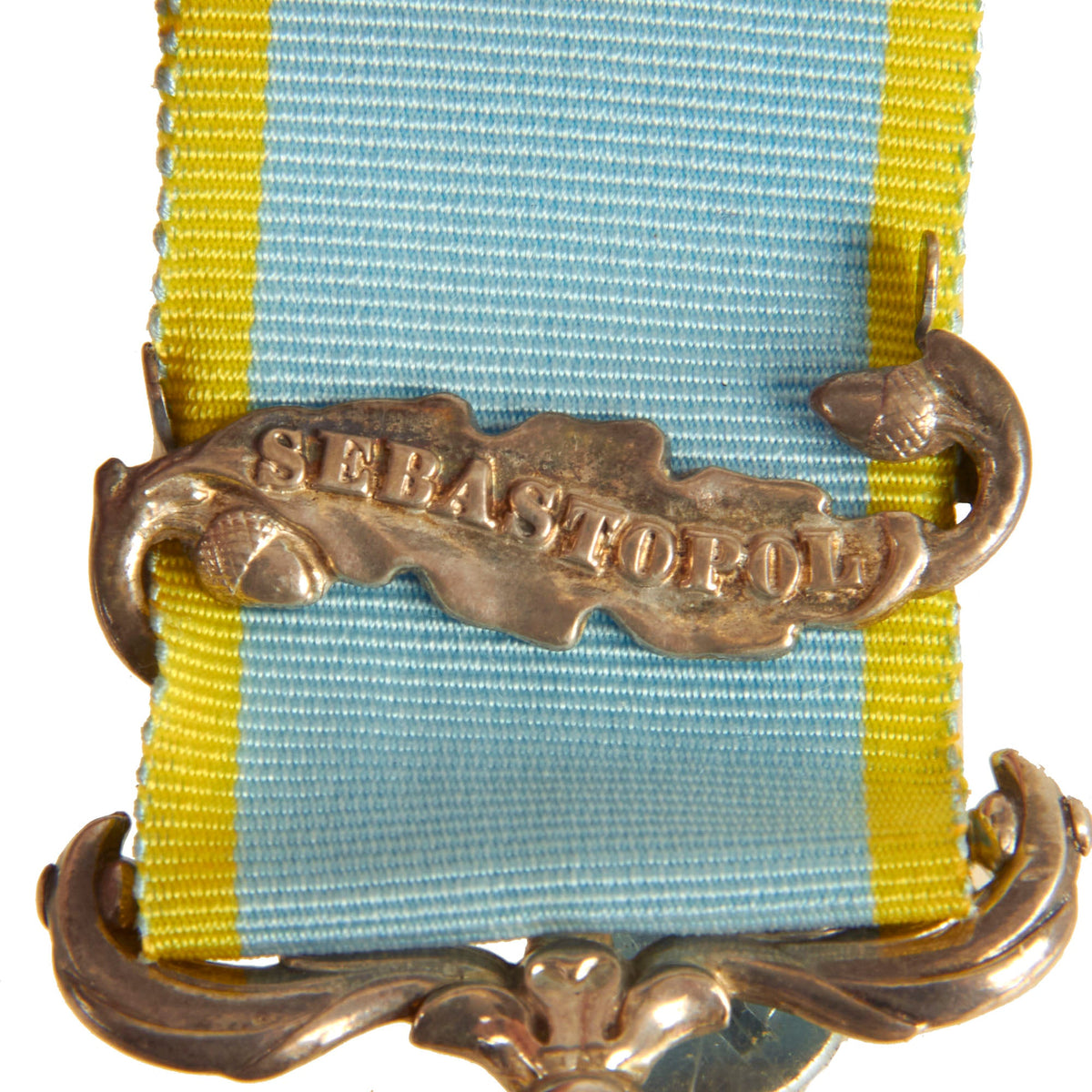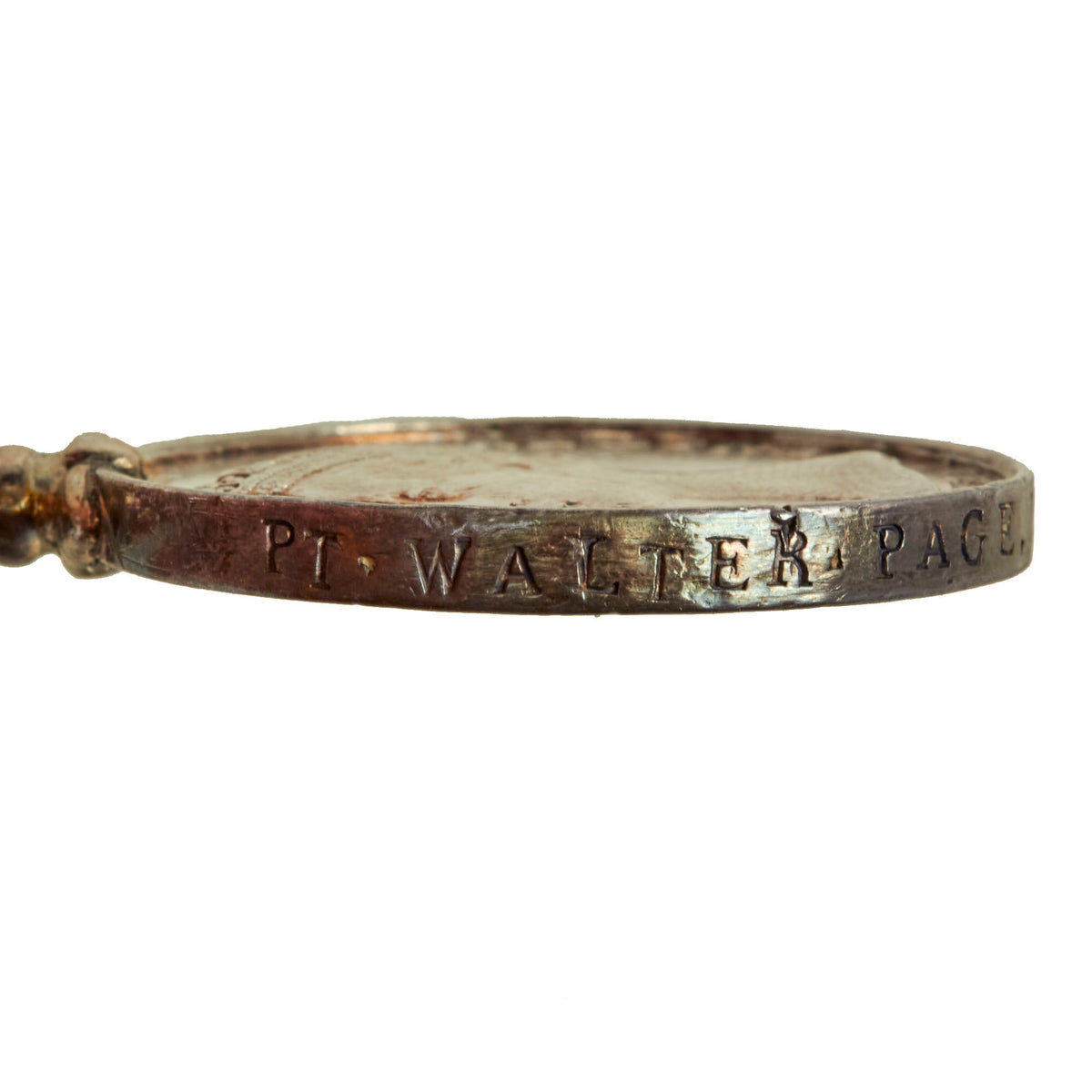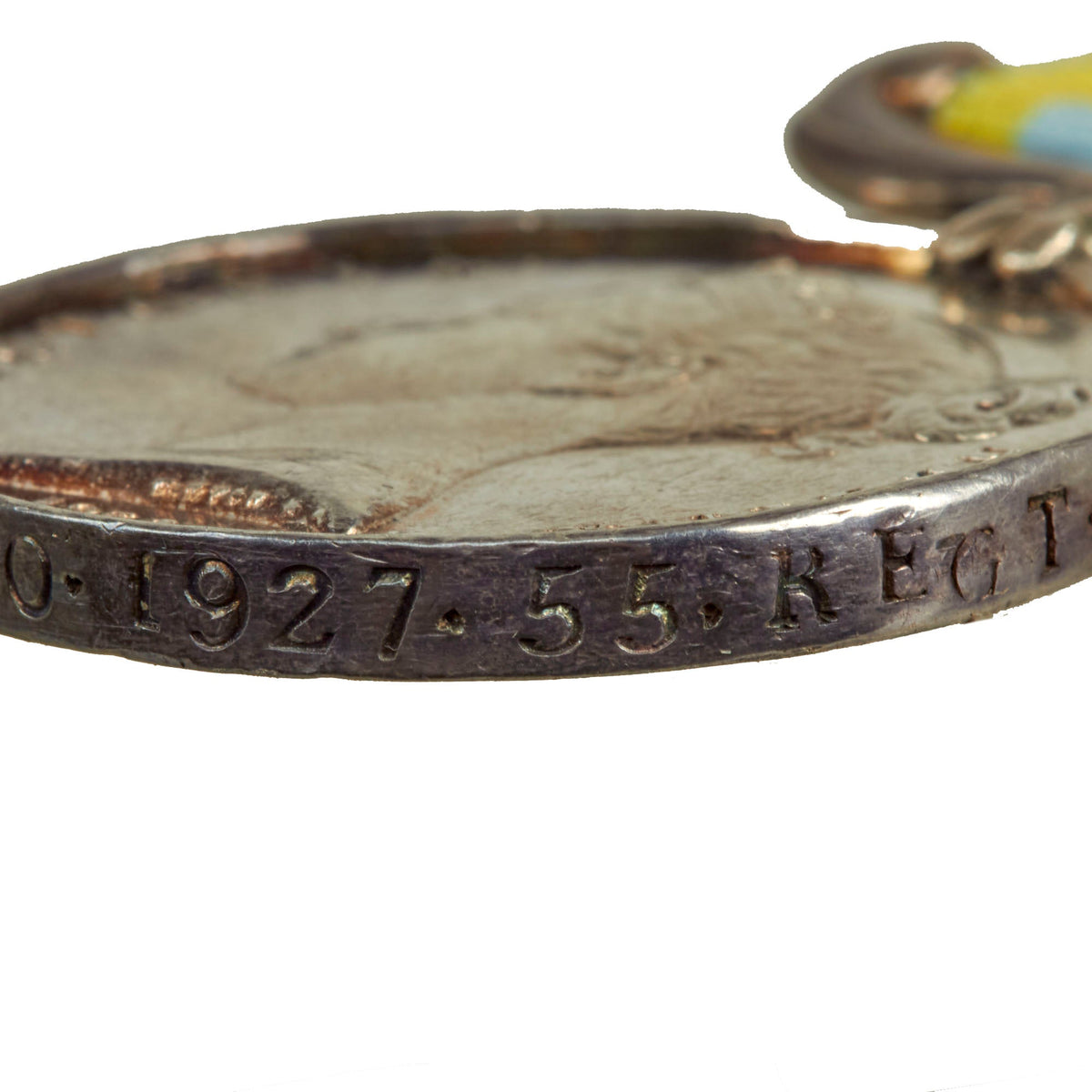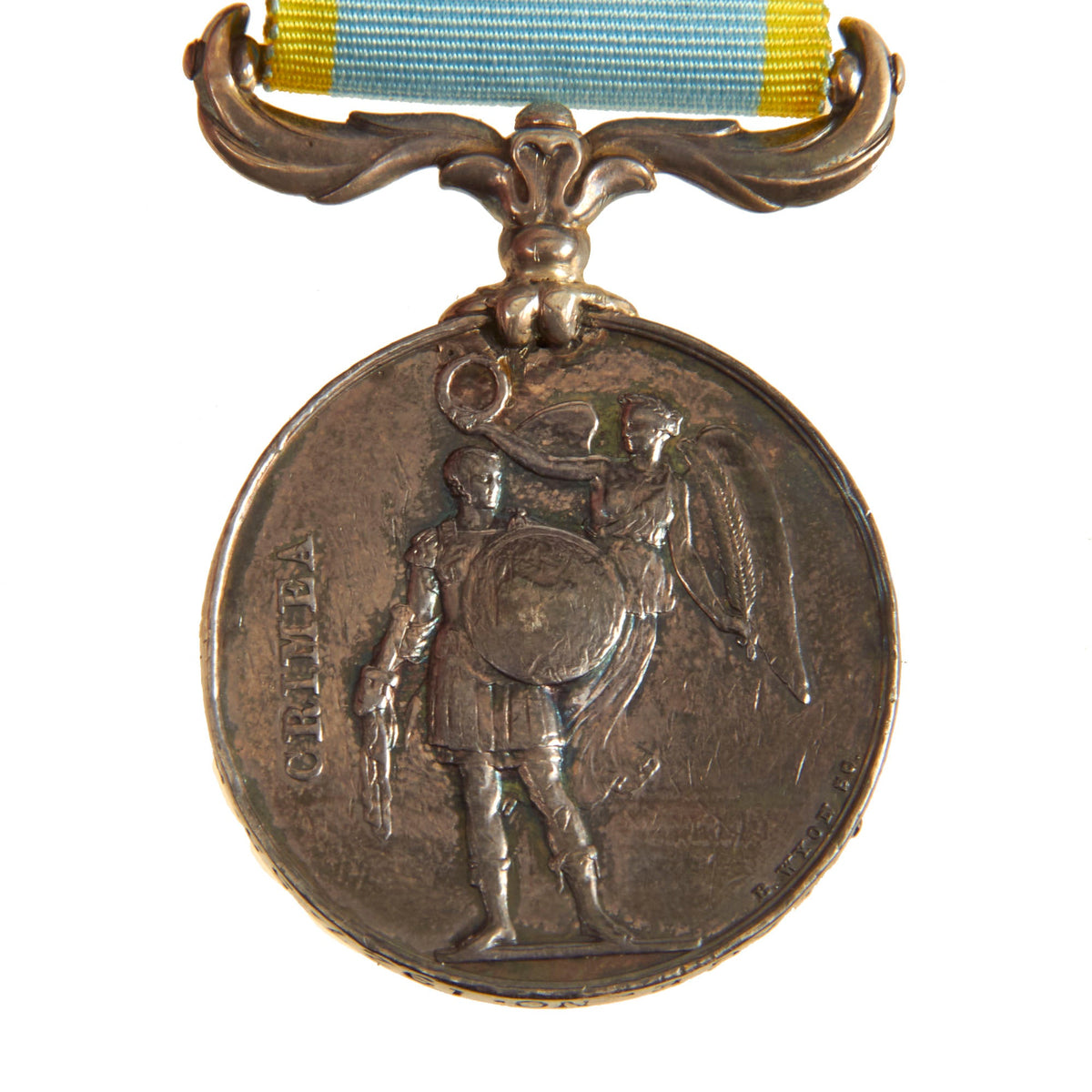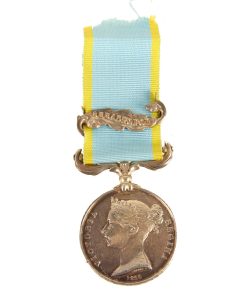Original British Crimean War Campaign Medal With Sebastopol Clasp Named To Private Walter Page, 55th (Westmorland) Regiment of Foot Original Items
$ 395,00 $ 118,50
Original Item: Only One Available. This is an exceptionally nice Crimea Medal that once belonged to Private Walter Page, a career soldier who enlisted on October 22, 1841 and was assigned to the 41st Regiment before being transferred to the 55th Regiment nearly 8 years later. He is noted as having spent One Year in China, was promoted to Corporal in 1847, served in Gibraltar in 1851. In 1852 he was Court Martialed and was reduced in rank. He was promoted again when his regiment was sent to Crimea in 1855.
The Crimea Medal was a campaign medal approved on 15 December 1854, for issue to officers and men of British units (land and naval) which fought in the Crimean War of 1854–56 against Russia. The medal was awarded with the British version of the Turkish Crimea Medal, but when a consignment of these was lost at sea, some troops received the Sardinian version.
The medal consists of a 36 millimeters (1.4 in) silver disc with, on the obverse, the diademed head of Queen Victoria and the legend VICTORIA REGINA with the date 1854 below. The reverse has a depiction of a standing Roman warrior about to receive a laurel crown from a flying figure of victory, the word CRIMEA appearing on the left.
The medal is notable for its unusually ornate clasps. Each is in the form of an oak leaf with an acorn at each end, a style not used on any other British medal. The ornate, floriated, swiveling suspender is also unique to the Crimea Medal. The 27 millimeters (1.1 in) wide ribbon is pale blue with yellow edges.
Most medals were issued unnamed, but could be returned for naming free of charge – impressed on the rim in block Roman capitals, in the same style as the Military General Service Medal – while some recipients had their medals privately engraved like this one.
The engraving reads as:
PT. WALTER PAGE NO. 1927 55 REGT
The 55th Regiment of Foot was a British Army infantry regiment, raised in 1755. After 1782 it had a county designation added, becoming known as the 55th (Westmorland) Regiment of Foot. Under the Childers Reforms it amalgamated with the 34th (Cumberland) Regiment of Foot to form the Border Regiment in 1881.
The regiment saw active service in Turkey and Russia during the Crimean War. The regiment saw action at the Battle of Alma in September 1854, the Battle of Inkerman in November 1854 and the siege of Sevastopol in winter 1854. After returning home in 1857 it was deployed to India in 1863 and saw action during the Bhutan War in 1864.
Private Page had received a clasp for SEBASTOPOL and is still present on the ribbon. The siege of Sevastopol is one of the last classic sieges in history. The city of Sevastopol was the home of the Tsar’s Black Sea Fleet, which threatened the Mediterranean. The Russian field army withdrew before the allies could encircle it. The siege was the culminating struggle for the strategic Russian port in 1854–55 and was the final episode in the Crimean War.
The overall condition of the medal is quite nice with clear details. There is tarnishing present with the appearance of having been polished away some time in the past. There is no extensive damage present and looks quite striking while displayed.
Comes more than ready for further research and display.
Fast Shipping with Professional Packaging
Thanks to our longstanding association with UPS FedEx DHL, and other major international carriers, we are able to provide a range of shipping options. Our warehouse staff is expertly trained and will wrap your products according to our exact and precise specifications. Prior to shipping, your goods will be thoroughly examined and securely secured. We ship to thousands clients each day across multiple countries. This shows how we're dedicated to be the largest retailer on the internet. Warehouses and distribution centres can be located throughout Europe as well as the USA.
Note: Orders with more than one item will be assigned a processing date depending on the item.
Before shipping before shipping, we'll conduct a thorough inspection of the items you have ordered. Today, the majority of orders will be delivered within 48 hours. The delivery time will be between 3-7 days.
Returns
The stock is dynamic and we cannot completely manage it because multiple stakeholders are involved, including our factory and warehouse. So the actual stock may alter at any time. It's possible that you may not receive your order once the order has been made.
Our policy is valid for a period of 30 days. If you don't receive the product within 30 days, we are not able to issue a refund or an exchange.
You can only return an item if it is unused and in the same state as the day you received it. You must have the item in its original packaging.
Related products
Uncategorized
Armoured Fighting Vehicles of the World: AFVs of World War One (Hardcover Book) New Made Items
Uncategorized
Uncategorized
Uncategorized
Uncategorized
Uncategorized
Uncategorized
Uncategorized
Angolan Rebel 1970s era 60mm Inert Display Mortar from Angolan Civil War Original Items
Uncategorized
Uncategorized
Uncategorized
Australian WWII Owen MK1 Machine Carbine SMG Custom Fabricated Replica with Sling Original Items
Uncategorized
Uncategorized
Uncategorized
Uncategorized
Uncategorized
